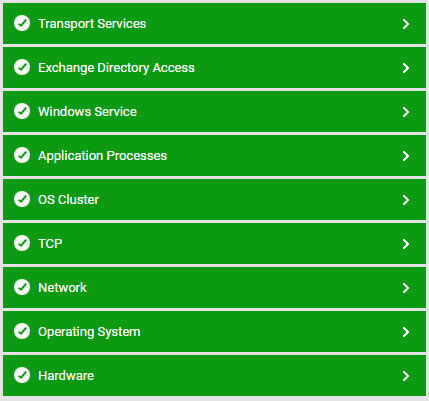Monitoring the Microsoft Edge Transport Servers
eG Enterprise offers a specialized Microsoft Exchange Edge Transport model that provides real-time insights into the performance of Edge Transport servers.

Figure 1 : Layer model of the Microsoft Exchange Edge Transport server
Every layer of Figure 1 reports a wide variety of statistics that enable administrators to quickly find answers to the following critical performance queries:
- Is the Active Directory cache adequately sized to handle requests from the Edge transport server?
- search requests to any domain controller fail owing to a bad network link or the non-availability of the domain controller?
- Were any LDAP fatal errors experienced while communicating with a domain controller?
- Did too many bind calls to any domain controller fail?
- Is any domain controller responding too slowly to read and search requests?
- Is the server experiencing processing bottlenecks? Are there any lengthy message queues on the server? If so, which ones?
- How effective is the Recipient filter agent? How many requests per second were rejected by the Recipient Lookup and Recipient Block List data sources?
- How successful is the Sender Filter agent in evaluating and filtering out "suspect" senders?
- Is the Sender ID agent efficient?
- Has the Edge Transport server experienced latencies while connecting to the Exchange store? Which store interface can this delay be attributed to?
- How many messages are available in the delivery queue? Is the number very high?
- Do too many messages exist in the retry queue?
- Are too many messages awaiting delivery to an external recipient?
- Have messages been queued in the Unreachable queue?
- Does the poison queue contain messages?
- How efficient is Connection Filter agent? How many connection requests were rejected by the agent? Which data store used by the agent rejected the maximum requests - the IP Block list providers, IP allow list providers, or the IP Allow/Block lists defined by administrators?
- Were any spams detected by the content filter agent?
- Were any local/remote senders blocked by the Protocol Analysis agent?
